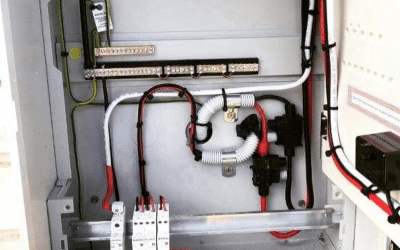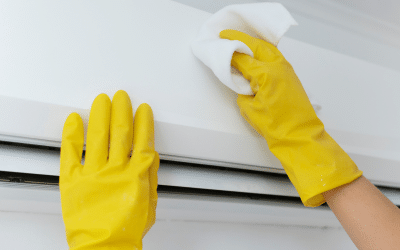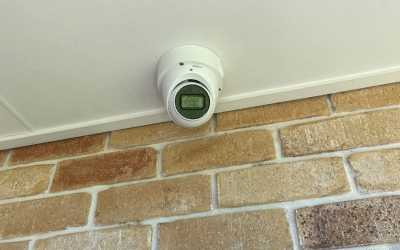In today’s fast-paced world, where technology and convenience are paramount, the electrical system in your home plays a crucial role in maintaining both comfort and safety. However, many homeowners overlook the importance of understanding their home’s electrical system. This knowledge is not only vital for ensuring efficient operation but also crucial for safeguarding against potential hazards. By familiarising yourself with the basics of your home’s electrical infrastructure, you can significantly reduce risks and enhance the overall safety of your living environment.
From the circuit breakers that protect against overload to the wiring that channels electricity, every component is designed with both functionality and safety in mind. However, these systems can become potential sources of danger if not properly maintained or understood. In this guide, we will delve into the essential aspects of your home’s electrical system, helping you to gain a deeper understanding of its workings. This will not only empower you to make informed decisions about maintenance and upgrades but also equip you with the knowledge to identify warning signs and take preventative measures against electrical mishaps.
Remember, knowledge is power – and in this case, it’s the power to keep your home running safely and efficiently.
What is a Home Electrical System?
At its core, a home electrical system is the network that distributes electrical power throughout your residence. This system is ingeniously designed to provide a constant, reliable flow of electricity to power everything from your most essential appliances to your smallest gadgets. Understanding its components and how they function together is key to appreciating the sophistication and necessity of this system.
The primary components of a home electrical system include:
- Service Head and Meter: This is where the electrical supply enters your home from the external grid. The meter measures the amount of electricity used, while the service head acts as the entry point.
- Main Distribution Board (Switchboard): Often considered the heart of your electrical system, this board divides the main electrical supply into various circuits. It houses safety devices like circuit breakers or fuses, which protect your home from overloads and short circuits.
- Circuits and Wiring: These are the pathways through which electricity is distributed to different parts of your house. Each circuit typically supplies power to a specific area or type of appliance.
- Earthing System: This is a crucial safety feature that prevents electric shock hazards by providing a path for fault current to flow directly to the ground.
- Outlets and Switches: These are the points at which you interact with your electrical system, allowing you to access electricity for various appliances and devices.
- Residual Current Devices (RCDs): These are advanced safety devices designed to prevent electric shocks. They automatically cut off the power supply if a fault is detected, significantly reducing the risk of injury.
By understanding these components and their roles, homeowners can better appreciate the complexity and importance of their home electrical systems. This knowledge is not just about ensuring that your appliances work; it’s about recognising the intricate system that keeps your home safe and your life convenient.
The Evolution of Home Electrical Systems
Reflecting on the historical evolution, it’s fascinating how home wiring systems have transitioned from the knob & tube wiring of the 1800s to the aluminum wiring of the 1960s, and now to the contemporary grounded electrical systems. Each stage brought its own set of challenges and advancements in safety. This historical context not only enriches our understanding of the electrical systems we rely on today but also underscores the importance of continual advancements in safety and technology.
From the circuit breakers that protect against overload to the wiring that channels electricity, every component is designed with both functionality and safety in mind. However, these systems can become potential sources of danger if not properly maintained or understood. In this guide, we will delve into the essential aspects of your home’s electrical system, helping you to gain a deeper understanding of its workings. This will not only empower you to make informed decisions about maintenance and upgrades but also equip you with the knowledge to identify warning signs and take preventative measures against electrical mishaps.
Knob and Tube Wiring: 1800s–1930s
Knob and tube wiring, prevalent from the 1800s to the 1930s, was among the earliest residential wiring systems. Characterised by its distinctive porcelain knobs and tubes, this system used single-insulated copper conductors run within wall or ceiling cavities, passing through the porcelain tubes to prevent contact with the wood framing. The knobs were used to anchor these wires, keeping them suspended in air for heat dissipation.
While innovative for its time, knob and tube wiring poses several risks in modern homes. It lacks a grounding system, vital for preventing electrical shocks. The insulation used is susceptible to deterioration over time, increasing the risk of short circuits and fire hazards. Furthermore, these systems were not designed to handle the electrical load demands of contemporary households, making them inadequate and often unsafe in today’s context.
Aluminium Wiring: 1960s through 1970s
During the 1960s and 1970s, aluminium wiring became popular due to its cost-effectiveness compared to copper. This wiring is lighter and easier to work with but comes with its set of challenges. Aluminium expands and contracts with heat more significantly than copper, leading to loose connections and, consequently, increased fire risks. It’s also more susceptible to corrosion when in contact with certain metals, leading to poor conductivity and additional hazards.
Identifying aluminium wiring in your home is crucial. It typically has “Aluminum,” “Al,” or a specific brand name stamped on the wire insulation. Homes with aluminium wiring require regular inspection and potential upgrading by a qualified electrician to ensure safe operation.
Modern Electrical Wiring
Today’s home electrical systems are a testament to the advancements in safety and efficiency. Modern systems predominantly use copper wiring, known for its excellent conductivity and durability. These systems are designed with a focus on safety, incorporating features like grounding, circuit breakers, and residual-current devices (RCDs) to protect against electric shocks and fire hazards.
Contemporary electrical systems are also tailored to support the increased electrical loads of modern households, accommodating a wide array of appliances and electronic devices. With structured wiring systems and smart technology integration, they offer not only safety but also convenience and energy efficiency, meeting the demands of the 21st-century lifestyle. The evolution of home electrical systems reflects our ongoing commitment to safety, efficiency, and innovation, ensuring they remain a silent yet vital backbone of our daily lives.
Understanding Electrical Panels and Circuit Breakers
Electrical panels and circuit breakers play a pivotal role in the safety and functionality of your home’s electrical system. They serve as the primary control centre, regulating the distribution of electricity and providing crucial protection against potential electrical hazards.
The electrical panel, often referred to as the breaker box, is where the power from the grid enters your home. From here, it’s distributed to various circuits, each feeding electricity to different parts of your house. The circuit breakers, housed within the panel, are safety devices designed to automatically shut off electrical flow when they detect an overload or a short circuit. This immediate action prevents overheating, reducing the risk of electrical fires and protecting your appliances from damage.
Understanding and maintaining your electrical panel and circuit breakers is essential for ensuring the safe operation of your home’s electrical system. Regular inspections by a qualified electrician can help identify potential issues before they become serious problems.
Arc Fault Circuit Interrupters (AFCIs)
Arc Fault Circuit Interrupters (AFCIs) represents a significant advancement in electrical safety technology. These specialized circuit breakers are designed to detect a wide range of electrical arcs – unintentional electrical discharges that can occur in damaged or deteriorated wires and connections. These arcs can generate intense heat, potentially igniting flammable materials and causing electrical fires.
AFCIs distinguish between harmless arcs that occur in the normal operation of switches, plugs, and brushed motors, and potentially dangerous arcs. When a hazardous arc is detected, the AFCI quickly cuts off the power to the circuit, significantly reducing the risk of an electrical fire. Their role in modern electrical safety cannot be overstated, and installing AFCIs in homes is a proactive step towards enhanced fire prevention.
Addition of AFCIs and GFCIs:
It’s important to understand modern safety devices like AFCIs and GFCIs. AFCIs are designed to prevent fires by detecting dangerous arc faults in your home’s wiring, while GFCIs are crucial in areas prone to moisture, cutting off the power to prevent electric shocks. Integrating both AFCIs and GFCIs into your home’s electrical system enhances overall safety, providing a comprehensive approach to fire prevention and shock protection.
Signs Your Electrical Panel Needs Attention
Recognising the signs that your electrical panel needs attention is vital for maintaining a safe and efficient home electrical system. Some common indicators include:
- Frequent Tripping of Circuit Breakers: If your breakers trip regularly, it could indicate an overloaded circuit or a fault in the electrical panel.
- Unusual Sounds: Buzzing or humming noises from the panel are often signs of a faulty breaker or loose connection.
- Burning Smell or Discolouration: A burning odour or discolouration around circuit breakers or the panel box can signal overheating and potential fire hazards.
- Old Age: Electrical panels typically have a lifespan of 25-40 years. If yours is older, it may not be able to handle modern electrical demands safely.
- Use of Fuses: If your home still uses a fuse box instead of circuit breakers, it’s time to consider an upgrade for improved safety and capacity.
Promptly addressing these issues with the help of a licensed electrician not only ensures the longevity of your electrical system but also safeguards your home against potential electrical hazards.
Electrical Wiring and Safety
Electrical wiring is the lifeline of any home’s electrical system, playing a critical role in powering appliances and devices. However, it also carries significant safety implications. Different types of wiring vary in their safety features, durability, and suitability for specific applications. Understanding these differences is key to ensuring both the efficiency and safety of your home’s electrical infrastructure.
Copper vs. Aluminum Wiring
The debate between copper and aluminium wiring in residential properties hinges on their safety and durability aspects.
Copper Wiring: Copper is the most commonly used material for electrical wiring due to its excellent conductivity and durability. It’s less prone to expansion and contraction, reducing the risk of loose connections. Copper wiring is also more heat resistant, making it less likely to overheat and pose a fire hazard. Its main drawback is the higher cost compared to aluminium wiring.
Aluminium Wiring: Used extensively during the 1960s and 1970s due to its cost-effectiveness, aluminium wiring is lighter and more flexible than copper. However, it’s more susceptible to corrosion and has a higher thermal expansion rate. These factors can lead to loose connections and increased fire risks, especially in older installations. While modern aluminium wiring has improved safety features, it still requires more maintenance and regular inspections compared to copper.
In summary, while copper wiring is generally considered safer and more durable, aluminium wiring can be used effectively if properly installed and maintained. The choice between the two often comes down to specific application needs, cost considerations, and ongoing maintenance commitments.
Identifying and Addressing Wiring Issues
Awareness of common wiring issues is essential for maintaining a safe electrical system. Some signs of potential problems include:
- Flickering or Dimming Lights: This can indicate a loose connection and can lead to overheating or even an electrical fire.
- Warm or Discoloured Switches and Outlets: These are signs of an overloaded circuit or faulty wiring, which require immediate attention.
- Frequent Blown Fuses or Tripped Breakers: These are often symptoms of overloaded circuits or potentially serious wiring issues.
- Burning Smell: A persistent burning smell could indicate overheating wires, which is a serious fire hazard.
- Buzzing Sounds: This can suggest a problem with your wiring, such as a loose connection or an overloaded circuit.
Addressing these issues typically involves a thorough inspection by a licensed electrician. Solutions may range from simple repairs to complete rewiring, depending on the age of the wiring and the severity of the problems. In homes with outdated or deteriorating wiring systems, a full upgrade is often the safest course of action, providing peace of mind and enhancing the overall safety and functionality of your electrical system.
Electrical Outlets and Switches
Electrical outlets and switches are the most interacted-with components of your home’s electrical system, making their maintenance and safety paramount. These elements not only provide convenient access to power but also play a critical role in ensuring the safety of your electrical infrastructure. Regular checks and maintenance of outlets and switches are essential to prevent potential hazards like electrical shocks, short circuits, and even fires.
Proper maintenance includes ensuring that outlets and switches are functioning correctly, are not overloaded, and are suitable for the specific demands placed on them. Additionally, with advancements in technology, modern outlets and switches offer enhanced safety features, such as built-in surge protection and ground fault circuit interrupters (GFCIs), which can further safeguard your home against electrical mishaps.
When to Replace Outlets and Switches
Knowing when to replace or upgrade your electrical outlets and switches is crucial for maintaining a safe and efficient home. Here are some key indicators that it’s time for a replacement:
- Age: If your home is older and hasn’t had an electrical upgrade, your outlets and switches may be outdated and not up to current safety standards.
- Visible Damage: Cracks, discolouration, or burn marks on outlets or switches are clear signs of wear and potential electrical hazards.
- Frequent Tripping: Outlets that cause safety switches to trip frequently may be faulty or unable to handle your current power needs.
- Loose Outlets: Outlets that don’t hold plugs securely can lead to arcing and overheating, posing a fire risk.
- Lack of Grounding: Older two-prong outlets should be replaced with three-prong grounded outlets for enhanced safety, particularly in areas where appliances are in proximity to water.
- Absence of GFCIs: In areas with a higher risk of water exposure, like bathrooms and kitchens, outlets should be GFCI-equipped to prevent shock hazards.
Upgrading or replacing outlets and switches is not just about addressing wear and tear; it’s also an opportunity to enhance the safety features of your home’s electrical system. Modern outlets with tamper resistance and smart switches that allow for remote control are examples of how upgrades can contribute to both safety and convenience. Consulting with a licensed electrician can provide you with the best options suited to your home’s specific needs and ensure that any replacements or upgrades are carried out safely and by current electrical standards.
Common Home Electrical Issues
Navigating through common electrical issues in the home is a vital part of maintaining both safety and efficiency. While some problems may seem minor, they can be indicative of more significant underlying issues. Understanding these common electrical problems, their implications, and how to address them is key to ensuring the longevity and safety of your home’s electrical system.
Flickering or Dimming Lights
Flickering or dimming lights can be more than just a nuisance; they often signal underlying electrical issues. Common causes include:
- Loose Bulbs: Sometimes, the simplest explanation is the correct one. A loose bulb can cause intermittent contact, leading to flickering. Tightening the bulb can resolve this issue.
- Faulty Light Fixtures: Old or damaged fixtures may cause flickering and need replacement.
- Voltage Fluctuations: Significant fluctuations in home voltage can lead to dimming or flickering. This can be due to large appliances drawing substantial power on startup.
- Overloaded Circuits: An overloaded circuit can also result in lights dimming, especially when other power-hungry devices are in use.
- Faulty Wiring: This is a more serious concern. Flickering across multiple lights could indicate a problem with your home’s wiring, which poses a significant fire hazard.
Solutions range from simple DIY fixes, like tightening bulbs, to professional interventions, such as rewiring or upgrading your electrical panel. If the problem persists or is widespread, it’s advisable to consult a licensed electrician.
Electrical Shocks
Experiencing a minor shock when touching an appliance is a warning sign that shouldn’t be ignored. This can occur due to:
- Faulty Appliance: The shock might be due to the appliance itself, indicating a need for repair or replacement.
- Grounding Issue: This could signify a problem with the appliance’s grounding or with your home’s electrical system.
- Wiring Problem: Faulty wiring or a lack of proper insulation can also lead to shocks.
Prevention involves regular maintenance of appliances, ensuring proper grounding in your electrical system, and having a professional electrician conduct periodic checks. If you experience an electrical shock, it’s important to disconnect and avoid using the appliance until it has been checked and, if necessary, repaired.
High Electrical Bills
An unexpectedly high electricity bill can be alarming and may point to several issues within your home’s electrical system, such as:
- Inefficient Appliances: Older appliances tend to consume more power. Consider upgrading to energy-efficient models.
- Electrical Leaks: These can occur due to wiring problems or faulty electrical devices.
- Overuse of High-Power Appliances: Frequent use of appliances like air conditioners, heaters, and dryers can significantly increase your power consumption.
- Incorrect Meter Reading or Billing: Sometimes the issue might be with your energy provider, not your home.
Understanding and addressing these factors can lead to more efficient energy use and cost savings. Simple actions like using energy-efficient lighting, unplugging devices when not in use, and regular maintenance checks can have a significant impact on reducing your electrical bills. If the problem persists despite these measures, a detailed audit by an electrical professional might be necessary to uncover less obvious issues.
Safety Tips for DIY Electrical Work
Embarking on DIY electrical work in your home can be a fulfilling endeavour, but it’s paramount to prioritise safety above all. Handling electrical tasks, even minor ones, demands a cautious approach to prevent accidents and ensure the work is done correctly. Here are some essential guidelines for safely conducting basic electrical repairs:
- Turn Off the Power: Before starting any electrical work, always turn off the power at the main switchboard. This is the most critical step in preventing electric shock.
- Use a Voltage Tester: After turning off the power, use a voltage tester on the wires or outlets you’ll be working on to ensure there’s no electricity flowing through them.
- Wear Safety Gear: Protective eyewear and insulated gloves are essential to safeguard against unexpected sparks or exposure to live wires.
- Use Insulated Tools: Make sure all the tools you use are suitable for electrical work and have insulated handles.
- Avoid Working in Wet Conditions: Water is a conductor of electricity. Ensure your work area, including your hands and feet, are dry to avoid electric shock.
- Understand What You’re Doing: Only attempt repairs you fully understand. If you’re unsure, it’s always safer to consult a professional.
- Check Regulations: Some electrical work might require a licensed electrician according to local regulations. Always check these before starting.
- Test the Repairs: Once the repair is complete and the power is back on, test your work with a voltage tester to ensure everything is functioning correctly.
Following these safety tips can help mitigate risks associated with DIY electrical work. However, remember that DIY solutions are not substitutes for professional expertise, especially for complex electrical issues.
Essential Tools for Home Electrical Repairs
Having the right tools is crucial for safely and effectively performing home electrical repairs. Here’s a list of essential tools that should be part of your DIY electrical toolkit:
- Multimeter: For measuring voltage, current, and resistance, this tool is indispensable in diagnosing electrical problems.
- Wire Strippers: Used to strip the insulation from electric wires, wire strippers are essential for most electrical work.
- Insulated Screwdrivers: Screwdrivers with insulated handles are crucial for working with live electrical components.
- Voltage Tester: A non-contact voltage tester can quickly determine whether there’s current in a wire or outlet.
- Pliers: Needle-nose and lineman’s pliers are useful for twisting wires and gripping small components.
- Circuit Finder: This tool helps in identifying circuit breakers or fuses that control specific electrical outlets or fixtures.
- Cable Cutters: For cutting larger cables, a sturdy pair of cable cutters is necessary.
- Flashlight or Headlamp: Good lighting is essential for safety in electrical work.
- Electrical Tape and Wire Nuts: For insulating wire connections and ensuring they are securely fastened.
- Safety Gear: Safety goggles and insulated gloves should always be worn.
Having these tools at your disposal will not only make the job easier but also enhance your safety as you tackle various electrical tasks around your home. Remember, if a repair feels beyond your skill level, it’s always wise to call a professional electrician.
When to Call a Professional Electrician
While DIY electrical work can be appealing, there are situations where calling a professional electrician is not just advisable, but necessary. Certain electrical scenarios require the expertise, experience, and tools that only a licensed professional can provide. Identifying these scenarios is key to ensuring the safety and efficiency of your home’s electrical system.
- Complex Installations and Repairs: Projects like installing new circuits, rewiring parts of your home, or fixing complex faults require a professional’s expertise.
- Frequent Electrical Problems: If you’re experiencing ongoing issues such as circuit breakers tripping often, it’s a sign of a deeper problem that needs expert attention.
- Safety Standard Compliance: An electrician ensures that all work complies with the latest safety standards and regulations, which is crucial for both safety and legal reasons.
- New Appliance Installation: For the safe installation of appliances that require a dedicated circuit or specific wiring considerations.
- After a Major Storm or Power Surge: If your home has experienced a significant power surge or storm damage, it’s wise to have an electrician inspect for potential hidden damage.
Evaluating Electrical Systems in Older Homes
Older homes pose unique challenges when it comes to electrical systems. Their wiring might not only be outdated but also potentially unsafe. Here are key considerations for these properties:
- Outdated Wiring: Homes built several decades ago may still have knob and tube or aluminium wiring, which can be hazardous by modern standards.
- Lack of Grounding: Older systems often lack proper grounding, which is essential for safety.
- Insufficient Power Supply: Older electrical systems may not be equipped to handle the power needs of modern appliances and devices.
- Deterioration: Age and environmental factors can lead to the deterioration of electrical components, increasing the risk of fire and other hazards.
For these reasons, it’s crucial to have a professional electrician evaluate and, if necessary, upgrade the electrical system in older homes.
Upgrading Your Home’s Electrical System
Understanding the need for and process of upgrading your home’s electrical system is essential for maintaining safety and functionality. Here’s when and why an upgrade might be necessary:
- Increased Power Demand: Modern lifestyles typically require more power than what old systems can safely deliver.
- Adding More Outlets or Circuits: To avoid overloading your current system, especially in homes where extension cords are heavily used.
- Installing Modern Safety Features: Upgrades like AFCIs, GFCIs, and better grounding are crucial for safety.
- Smart Home Integration: Modernising your system for compatibility with smart home devices and automation.
The process of upgrading involves a thorough assessment by a licensed electrician, who can then plan and implement the necessary changes in compliance with current electrical codes and standards. This ensures your electrical system not only meets your current needs but is also safe and future-proof.
Future of Home Electrical Systems
The future of home electrical systems is an exciting realm, brimming with innovative technologies and trends that promise to revolutionise how we interact with and manage our home’s electricity. These advancements focus not only on enhancing efficiency and safety but also on integrating smart technology and sustainable practices.
- Smart Home Integration: The rise of smart home technology is perhaps the most significant trend. Future electrical systems are expected to be fully integrated with smart devices, allowing homeowners to control and monitor their electricity usage remotely. This includes smart thermostats, lighting systems, and appliances that can be managed via smartphones or voice-activated devices.
- Energy Efficiency: As global awareness of energy consumption grows, future home electrical systems will place a strong emphasis on efficiency. This includes the use of LED lighting, high-efficiency appliances, and systems designed to reduce standby power usage.
- Renewable Energy Integration: The integration of renewable energy sources like solar panels and wind turbines is set to become more mainstream. Electrical systems will be designed to seamlessly incorporate these sources, often coupled with battery storage systems to ensure a constant power supply.
- Electric Vehicle (EV) Charging: With the rise of electric vehicles, future homes will likely include built-in EV charging stations, requiring electrical systems capable of handling higher loads.
- Enhanced Safety Features: Advancements in safety technology will continue to evolve. Future electrical systems may include more sophisticated circuit breakers, capable of diagnosing and predicting issues before they become serious problems, and further advancements in AFCI and GFCI technology.
- IoT and AI Integration: The Internet of Things (IoT) and Artificial Intelligence (AI) will play significant roles in the management of home electrical systems. These technologies can help in predictive maintenance, energy management, and even in enhancing the security of the electrical infrastructure.
- Sustainable Practices: There will be a greater focus on using materials and practices that are environmentally friendly and sustainable, reflecting a global shift towards more eco-conscious living.
In conclusion, the future of home electrical systems is geared towards creating a more connected, efficient, and sustainable living environment. These advancements will not only transform the way we use electricity in our homes but also contribute to broader goals of energy conservation and environmental protection.
Key Takeaways
Understanding and maintaining a safe home electrical system is crucial for the well-being of your household. Here are the essential points to remember:
- Knowledge of Electrical System Components: Familiarise yourself with the main components of your home’s electrical system, including the service head, main distribution board, circuits, wiring, earthing system, and outlets.
- Awareness of Electrical System Evolution: Recognise the differences between older wiring methods like knob and tube or aluminium wiring and modern systems, and understand the safety implications.
- Regular Maintenance of Electrical Panels and Breakers: Keep a check on your electrical panels and breakers, and be aware of the role of AFCIs in preventing electrical fires.
- Proper Wiring and Outlet Maintenance: Understand the types of wiring (copper vs. aluminum) and their safety implications. Regularly inspect your outlets and switches for any signs of damage or malfunction.
- Identifying Common Electrical Issues: Be vigilant about common problems like flickering lights, electrical shocks, and high electrical bills, and know how to address them.
- Safe DIY Electrical Work: If engaging in DIY electrical work, prioritise safety by using the right tools and following safety guidelines.
- When to Call a Professional: Recognise situations that require a professional electrician, especially in scenarios involving complex repairs, installations, or evaluations of older systems.
- Future Trends: Stay informed about the emerging trends in home electrical systems, such as smart home integration, renewable energy sources, and enhanced safety features.
Conclusion
Electrical safety in the home is not just a responsibility; it’s a necessity. As homeowners, understanding and maintaining your electrical system is integral to ensuring the safety, efficiency, and longevity of your living environment. Regular maintenance, staying informed about the latest safety standards and technologies, and knowing when to call in a professional are key practices that contribute to this goal.
Moreover, as we look towards the future, embracing advancements in smart technology and sustainable practices will not only enhance the functionality of our electrical systems but also contribute to a safer and more environmentally conscious world. Remember, a well-maintained electrical system is a cornerstone of a safe and comfortable home.
FAQ’s
What is a Home Electrical System and How Does it Work?
A home electrical system is the network responsible for distributing electrical power throughout your home. It comprises components like the service head and meter, main distribution board, circuits and wiring, earthing system, and outlets. This system ensures a constant flow of electricity to power your appliances and gadgets.
What Are the Main Components of a Home Electrical System?
The key components include the service head, where electricity enters from the grid; the main distribution board, which divides power into circuits; circuits and wiring for distributing power; the earthing system for safety; and outlets and switches for accessing electricity.
How Have Home Electrical Systems Evolved Over Time?
Home electrical systems have evolved from knob and tube wiring in the 1800s to aluminium wiring in the 1960s, and now to modern grounded systems. Each stage brought improvements in safety and efficiency, catering to the increasing electrical demands of households.
How Do I Identify and Address Issues in My Home's Electrical Wiring?
Common signs of wiring issues include flickering lights, warm or discoloured switches, frequent blown fuses, and a burning smell. Addressing these issues may require an inspection by a licensed electrician, with solutions ranging from simple repairs to complete rewiring.
Why is It Important to Upgrade Electrical Outlets and Switches?
Upgrading is crucial for maintaining safety and efficiency. Indicators for upgrades include aged outlets, visible damage, frequent tripping, and the absence of grounding or GFCIs, especially in moisture-prone areas.







